In the broader Gupkar Alliance, half of the candidates fielded by PAGD are from the NC alone. Was this the outcome of PDP’s failure in having candidates or NC’s insistence in conveying that it is the big-brother, Yawar Hussain tries to find out
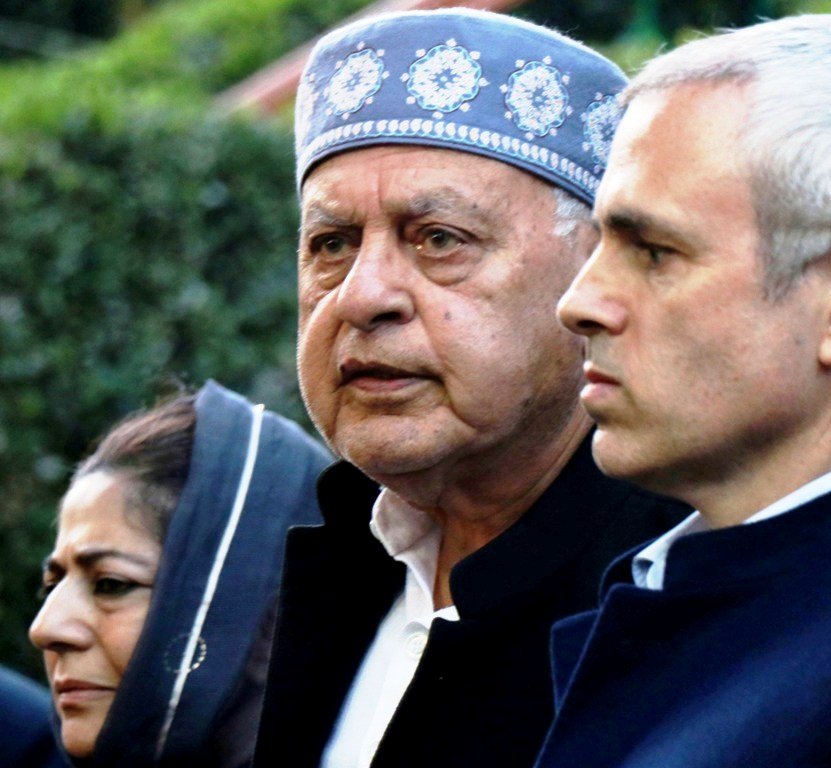
In the ongoing District Development Council (DDC) elections, the National Conference (NC) has emerged as the big brother in Peoples’ Alliance for Gupkar Declaration (PAGD). It is contesting almost half of the berths in comparison to all other constituents put together.
Of 140 DDC segments across Kashmir, PAGD has already issued 130 mandates – 65 nominations have gone to NC and 65 to all others. The 10 seats of Budgam were left open for all PAGD members to compete in, what is being called as ‘a friendly’ contest. PAGD is a six-party alliance, excluding Congress.
NC’s arch-rival, the Peoples Democratic Party (PDP) that has presided over two coalition governments since their inception in 1999, is contesting at 39 seats.
The PDP is followed by Jammu and Kashmir Peoples Conference (JKPC) with 13 seats; Jammu & Kashmir Peoples Movement (JKPM) with seven seats; Awami National Conference (ANC) with three and the Communist Party of India (M) with three.
Seat Sharing
In the first PAGD list for 27 seats, Sajjad Lone got two seats and PDP three. The rest of the 22 seats were given to NC.
In the second list for 27 seats, the PDP and NC got eight seats each; JKPC five; ANC one, JKPM two.
However, in this very list, three seats were given to Congress—Zaingeer (Baramulla), Shangus (Anantnag) and Tral (Pulwama). After the Congress walked out of the alliance, NC fielded its own candidates.
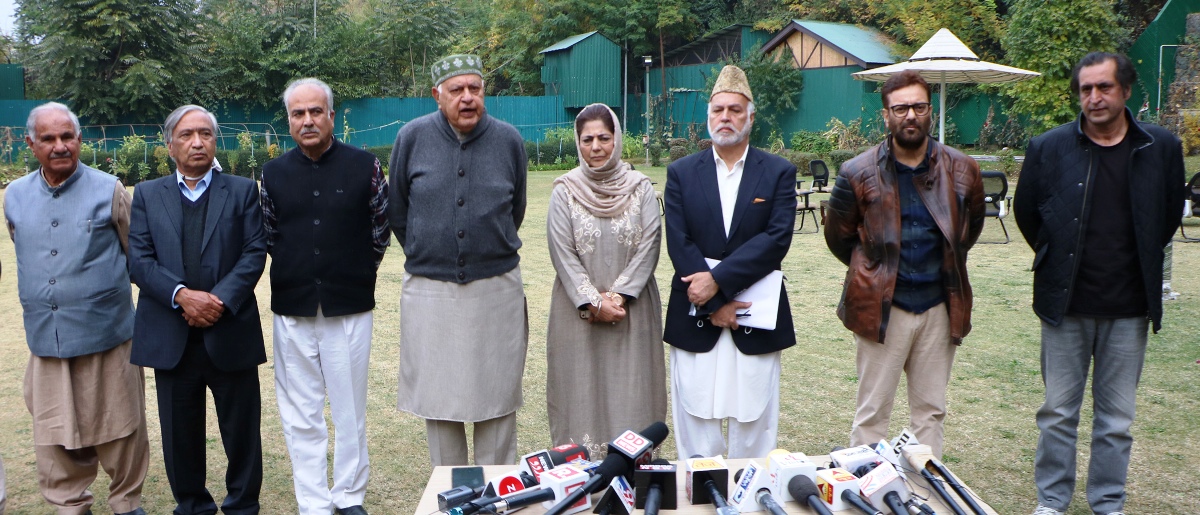
In the third list of 16 candidates, PDP got eight seats, NC six, the Peoples Conference and the Awami National Conference has one each.
In the fourth list for 16 candidates, seven seats were given to the PDP, four to NC, two to CPIM and one each to JKPC, ANC, and the JKPM.
In the fifth list of 16 seats, the NC was allocated eight seats, PDP five, JKPC two, and the JKPM one.
In the sixth list of 14 seats, NC got eight, PDP three, while the ANC and JKPM were given a seat each.
On Back Foot
What is interesting is that PDP is seemingly on a back foot in the area of its influence. In Anantnag district where PDP had four of the six seats in the last assembly, it was given five mandates against seven for NC and two to JKPM. NC is contesting on PAGD mandate from Larnoo, Pahalgam, Khoveripora, Hiller, Shangus, Breng, and Achbal. JKPM is contesting Vessu and Verinag.
In neighbouring Pulwama district, where PDP had won all four segments in 2014 assembly elections, the party is now contesting on six DDC segments out of 14 announced by the PAGD . The areas include Pulwama-I, Awantipora-I, Awantipora-II, Pampore and Aripal. In contrast, the NC is also contesting six (Litter, Dadsara, Shadimarg, Tral, Kakpora-I and Newa),
ANC was given Pulwama-II while for Achgoza, which went to polls in phase-I, the PAGD had put up no candidate officially.
Kulgam, another PDP stronghold, has the party contesting from three seats – Kund, Pombay and DK Marg, and the NC from eight –
DH Pora, Manzgam, Pahloo, Devsar-A, Devsar-B, Behibag, Frisal, and Qaimoh-A. Interestingly, the PDP has given away Devsar-A and B segments to NC even though Mehbooba Mufti’s maternal uncle and former PDP vice president Sartaj Madni had lost 2014-assembly polls from Devsar to the Congress and not NC.
The CPIM was given Kulgam-I, Kulgam-II, and Qaimoh-B segments. Interestingly, it has fielded a candidate from Pombay and says it is winning it.
In Shopian, where PDP had won both seats in 2014, it is currently contesting seven seats. NC has also got the mandate to contest at seven seats.
In Baramulla , where PAGD has announced seat-sharing on all14 DDC seats, the PDP has got three (Kunzer, Narnaw, and Sangrama) and JKPC has got four (Rafiabad, Pattan, Singhpora, and Parenpillan. Here, NC has bagged seven segments (Rohama, Tangmarg, Zaingeer, Tujjar Sharief, Baramulla, Boniyar, and Wagoora).
The PDP had won five out of seven assembly segments from the district in 2014 assembly polls while NC had won just one.
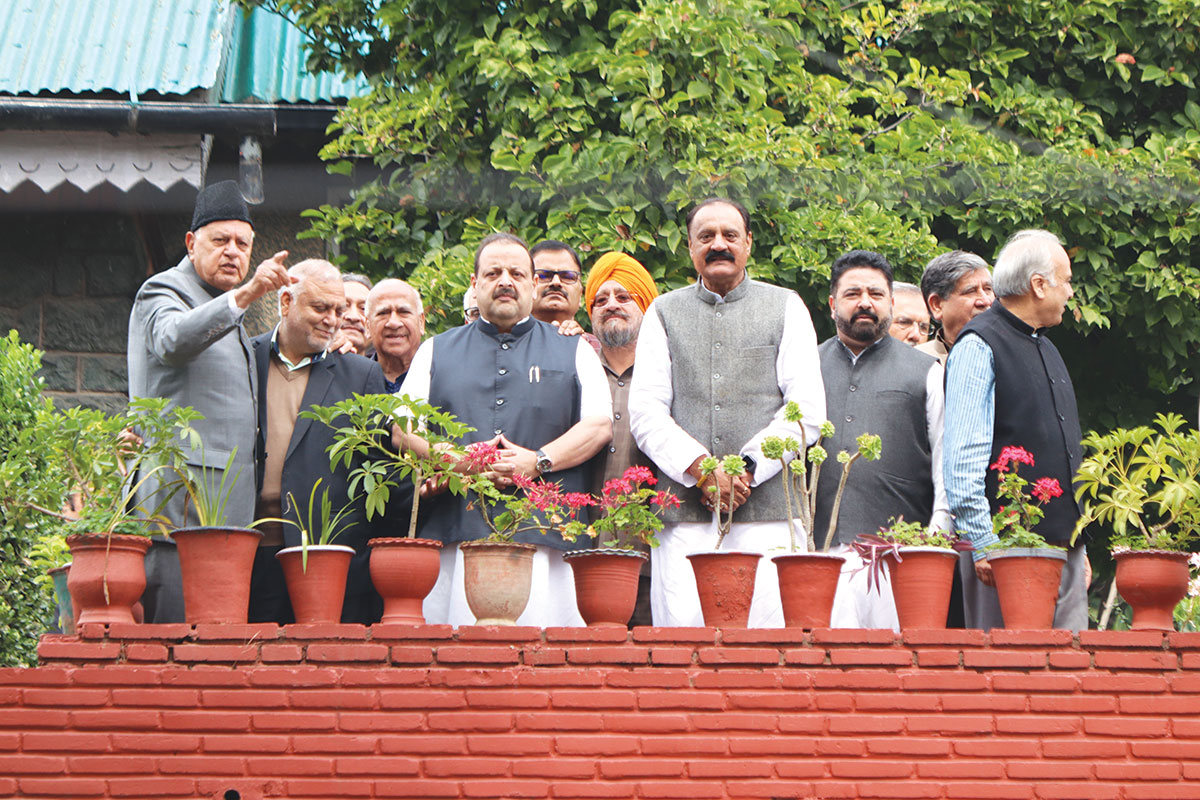
. KL Image by Bilal Bahadur
In Bandipora, the PDP has five segments while NC is poised at six each out of 14 segments announced by PAGD. The PDP is contesting on Arin, Bonakoot, Nowgam, Bandipora-B, and Hajin-C while the NC is contesting on Gurez, Sumbal, Aloosa and Tulail, Naidkhai, and Hajin-A. ANC and JKPC have bagged Bandipora-A and Ganastan seats respectively from the district while JKPM has been given Hajin-B.
In Kupwara district’s five assembly seats, the NC had nothing. However, in the DDC polls, it was allocated four seats. PDP that had won two assembly seats has got four berths.
The JKPC, which had won two assembly seats in 2014, got six DDC berths (Kralpora, Rajwar, Mawar, Qaziabad, Ramhal, and Reddi-Chowkibal).
In Ganderbal, PDP got five segments (Lar-A, Ganderbal-A, Ganderbal B, Sherpathri, and Kangan-A). On the other hand, NC got eight segments (Gund-I, Gund-II, Wakura A, Wakura- B, Lar-B, Ganderbal-C, Kangan-B, and Kangan-C). While Safapora segment has gone to JKPM.
In Srinagar, PDP was allocated only Khonmoh-III while JKPM has got Srinagar-I and Srinagar-II segments. Qamarwari-I and Qamarwari-II were given to JKPC and ANC got Khonmoh-II.
The rest eight DDC segments including six from Harwan along with Khonmoh-I and Srinagar-III have gone to NC.
Srinagar’s Harwan and Khonmoh areas are part of the Sonwar assembly constituency that PDP candidate had won in 2014. He is now with Apni Party. Interestingly, PDP had won five of the eight assembly seats from Srinagar in 2014.
Not An Issue
PDP Vice President, Abdul Rehman Veeri said his party is fighting for much “bigger” issue. “Fewer seats won’t affect PDP. People know what we are fighting for. Let the results come,” he said.
Echoing his VP, Party General Secretary, Ghulam Nabi Lone Hanjura said PDP is fighting for a “greater” cause. “We had even told the NC that they should contest while the PDP would just support their candidates everywhere,” Hanjura said. He said every seat was discussed and mutually agreed and many seats were given to smaller members of the alliance. “These fewer seats for us were decided by our members in the PAGD.”
PAGD Mess
In Budgam, where PDP and NC had won two seats each in 2014, the parties have now decided to contest against each other as they couldn’t reach a consensus.
Hanjura, who hails from Budgam, said that there is a friendly contest among PAGD candidates on 10 seats out of 14 from the district because they couldn’t reach a consensus.
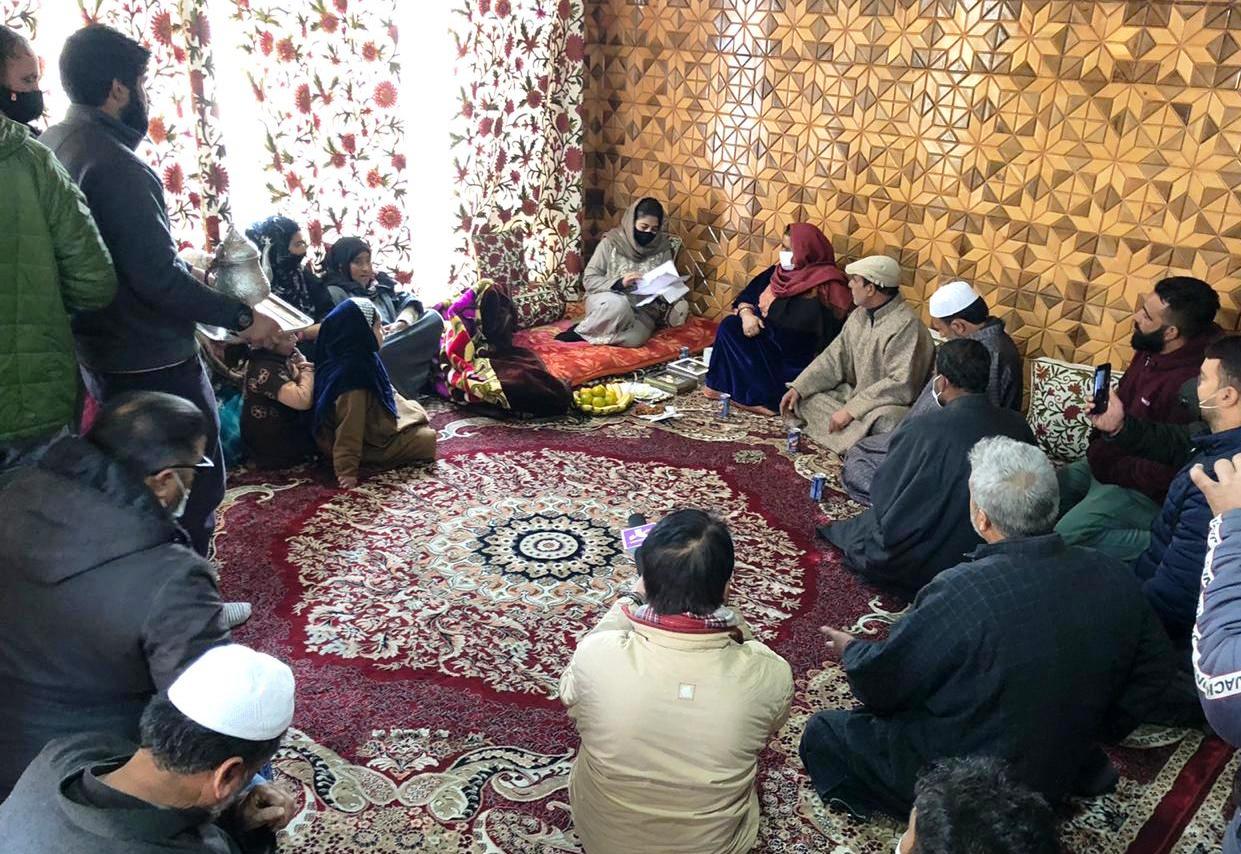
Senior PDP leader and a Mehbooba Mufti confidant, Peer Mansoor said that he is “disappointed” as the party has even ceded away its “bastion” of Shangus.
“My 20 thousand odd voters feel let down. So do I,” Mansoor said, insisting he doesn’t know if this all will benefit PDP. “NC has never won from Shangus since 1977. It has been a PDP or Congress stronghold. Yet the DDC seat from the area has gone to the NC.”
Seniors both from both the two main Kashmir parties admit that there are proxy candidates from both sides against the official PAGD candidate.
A senior PDP leader from south Kashmir said there are “proxy” candidates across the Valley. He said questions should be asked to the PAGD executive members as to why there are PAGD constituent party candidates fighting the official candidates.
In Kupwara’s Lolab – as in the case of Beerwah, the NC has put up Nasir Lone as a PAGD candidate from Sogam. His immediate rival is neither Apni Party nor BJP but PDP.
Nasir Lone said that the decision to fight together was taken by the leadership in a room but for it is difficult for it to actually work on the ground. Still, he said, “I am optimistic.”
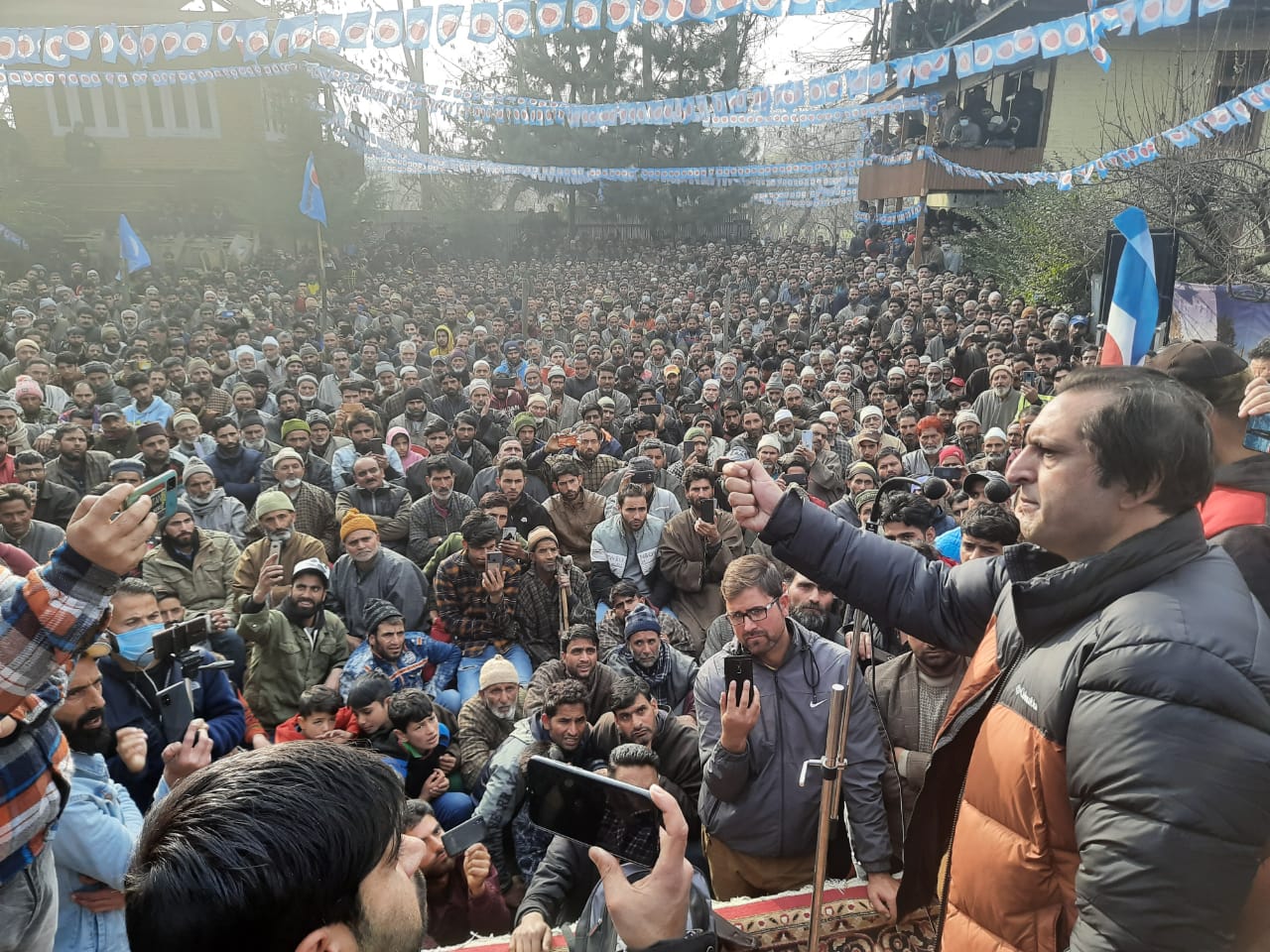
In the Kupwara district’s Reddi Chowkibal constituency, the PAGD has given its mandate to Habibulla Beigh of JKPC. But NC leader Javaid Ahmad Mir has decided to contest as an independent from the area.
“My people wanted me to fight. I followed their demand even though the PAGD mandate has gone to PC,” Mir said.
In a similar instance from north Kashmir’s Baramulla district, Khurshid Ahmad Khan, a JKPC leader is contesting as an independent against PAGD’s official candidate Shabir Ahmad Lone from the NC.
The Vote Share
Though post-5/8 all the earlier trends may not matter much but it is also important to see which party behaved well and where after 1996, the first post-militancy election. PDP did not exist in 1996 because it was part of the Congress. It is in the contest since 2002.
| 1996 J&K Assembly Election Poll Percentage of Political Parties
|
|||
| Party | Seats Contested | Seats Won | Vote Percentage |
| BJP | 53 | 08 | 12.13 |
| JKNC | 81 | 57 | 34.78 |
| Congress | 84 | 07 | 20.00 |
| Janta Dal | 76 | 05 | 10.87 |
In 1996, for NC, there was no contest at all, not at least in Kashmir. The government of India was very keen to see a civilian government taking over in Srinagar. The understanding was so deep that the Congress government in Delhi did not object to a Congress lawmaker, Molvi Iftikhar Ansari joining NC without any alliance.
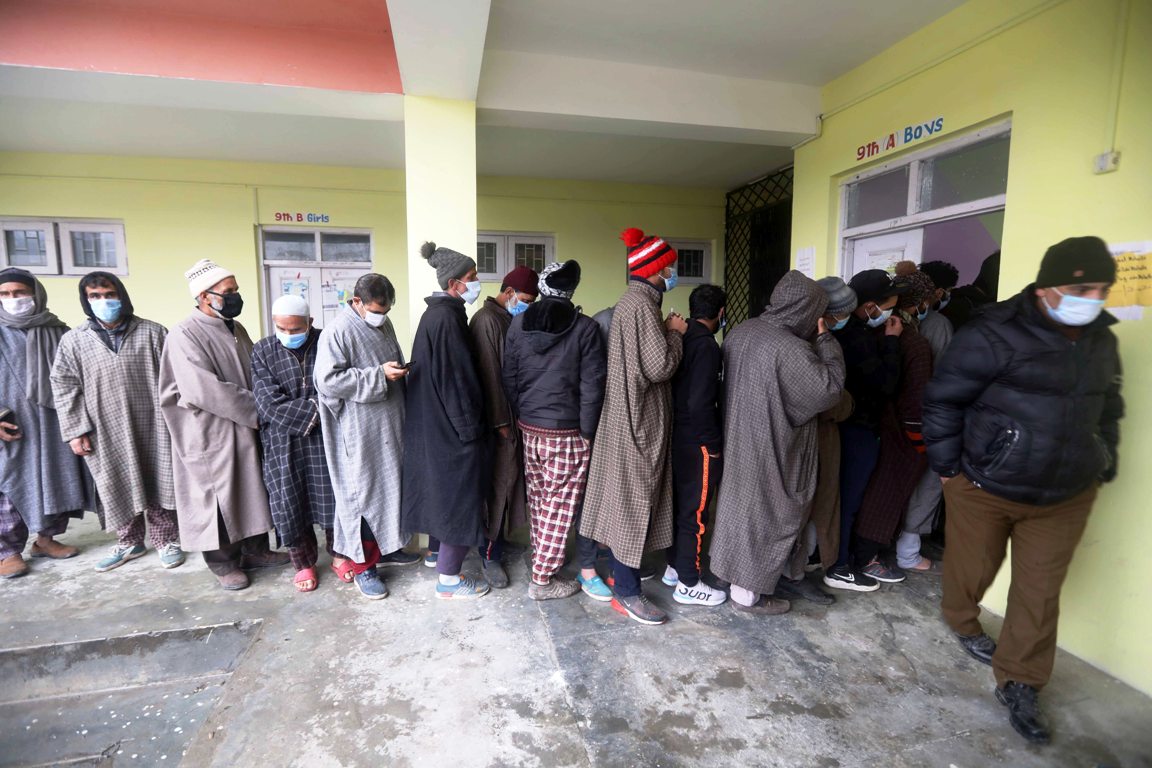
Then, federal political influences were witnessed by the presence of Janta Dal that managed 10.87 per cent vote share. BJP had won eight seats and secured 12.13 per cent votes.
The voting patterns started changing only in the 2002 assembly elections when PDP contested against the NC. It eventually won 16 seats but lacked any substantial vote share.
| 2002 J&K Assembly Election Poll Percentage of Political Parties
|
|||
| Party Name | Seats Contested | Seats Won | Vote Percentage |
| BJP | 58 | 01 | 08.57 |
| JKNC | 85 | 28 | 28.24 |
| PDP | 59 | 16 | 09.28 |
| Congress | 78 | 20 | 24.24 |
The real difference in the vote share was in low polled Kashmir, rather than hugely participated Jammu.
NC’s Kashmir vote share in 2002 polls was 34.9 per cent while PDP’s had 25.8 per cent. On the state level, PDP’s vote share was below 10 per cent. In Jammu Congress literally eat-up, BJP’s influences.
Eventually, it was Congress-PDP alliance that ruled the state up to 2008. In 2008 assembly polls— held in the aftermath of Amarnath land row, NC made a comeback with the same number of 28 seats but an alliance with Congress.
| 2008 J&K Assembly Election Poll Percentage of Political Parties | |||
| Party | Seats Contested | Seats Won | Vote Percentage |
| BJP | 64 | 11 | 12.45 |
| JKNC | 85 | 28 | 23.07 |
| PDP | 78 | 21 | 15.39 |
| Congress | 78 | 17 | 17.71 |
PDP improved its tally – 21 seats in the assembly and 6.11 per cent point increase to 15.39 per cent. In Kashmir, PDP polled 27.6 per cent of the total votes polled as NC’s vote share dwindled to 27.5 per cent vote, 7.4 per cent less from 2002.
On the state level, NC vote share tanked by 5.17 per cent.
Even the Congress that was part of the successive alliance’s in 2002 and 2008, had its vote share dropped by 6.53 per cent despite getting 17 seats in the assembly. BJP improved to 10 seats and a marginal increase in vote share by 3.88 per cent.
In 2014, NC and Congress were swept away partly by Modi/Mufti wave and partly by anti-incumbency. It was the first election that showed how the mandate breaks almost evenly. Though there were minor differences in the vote share – almost all the four major contesting parties were almost around 20 per cent of the votes.
| 2014 J&K Assembly Election Poll Percentage of Political Parties | |||
| Party | Seats Contested | Seats Won | Vote Percentage |
| BJP | 75 | 25 | 22.98 |
| JKNC | 85 | 15 | 20.77 |
| PDP | 84 | 28 | 22.67 |
| Congress | 86 | 12 | 18.01 |
BJP emerged the most voted party in Jammu and PDP in Kashmir.
NC vote share shrunk further by 2.3 per cent while that of Congress improved by an insignificant 0.28 per cent. PDP won 28 seats, its highest ever. Practically pushing NC to No 2 status, PDP got 34.9 per cent vote share in the north (against NC’s 28.2 per cent) and 40.1 per cent in the south (against NC’s 30.6 per cent).
Dusk of PDP
With its founder dying within the first year of his rule and his daughter not able to manage beyond two years, the PDP started dismantling like a pack of cards. By now,
10 former cabinet ministers have left the party including Haseeb Drabu, Basharat Bukhari, Imran Reza Ansari, Choudhary Zulfiqar Ali, Altaf Bukhari, Khalil Bandh, Abdul Majeed Padder, Muzzafar Hussain Baig, Mohammad Ashraf Mir, and Javaid Mustafa Mir.
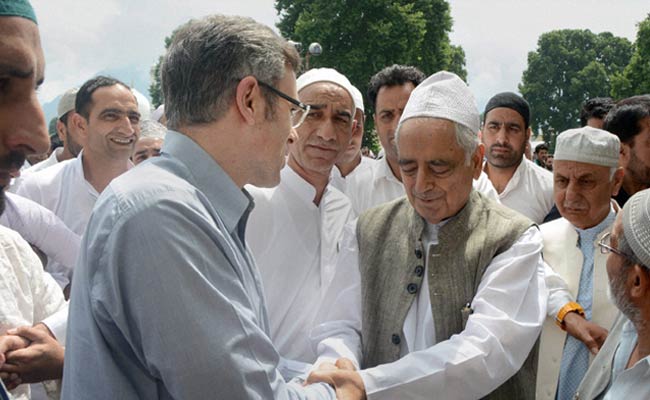
Also, 11 former legislators parted ways including Abid Ansari, Abdul Rahim Rather, Qamar Choudhary, Shah Mohammad Tantray, Javaid Hassan Baig, Noor Mohammad Sheikh, Mohammad Abbas Wani, Saifuddin Bhat, Asgar Ali, Yawar Dilawar Mir, and Yasir Reshi.
The party also lost some senior leaders including Rafi Ahmed Mir, Raja Aijaz Ali, Mohuidin Muntazir, Dilawar Mir and Peer Mohammad Hussain.
Now, it seems, it lacked either the interest or the candidates – or in worst-case scenario both, to field candidates in the ongoing DDC polls.















